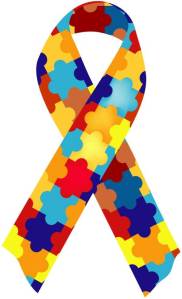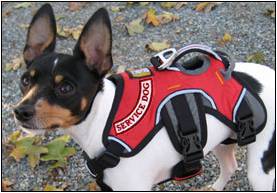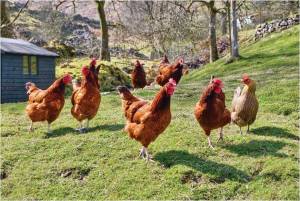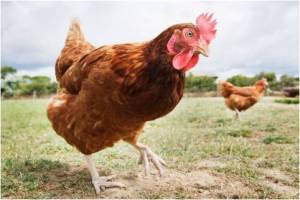I found this really interesting article today to add on to my previous blogs about Autism.
To give a little background on the disorder, Autism is defined as a neural disorder characterized by poor social interaction, problems in verbal and non-verbal communication, and restrictive, repetitive behavior. A formal diagnosis of autism requires the symptoms to be seen in children before the age of three and for the symptoms to be severe enough to disrupt the child’s normal development. Autistic behavior can fall on a spectrum ranging from mild social impairment to more severe forms with gross impairments in cognitive and social functioning. 
Despite controversies raised over vaccination and other presumed environmental factors, research has shown autism to have a strong genetic component although the genetics of autism have not been clearly established. While the current prevalence of autism is 1-2 per 1000 births worldwide, the rise in diagnosed cases of autism over the past four decades has sparked renewed concern. Whether these new autism cases are due to increased awareness of autism symptoms or an actual increase in children with autism, understanding why autism occurs seems to be more critical than ever.
While animal models of disease are commonly used to understand how genetic diseases can operate in humans, developing equivalent models for autism has been more difficult. Up to now, much of the animal research into autism has focused on rodents such as rats and mice, which are specifically bred to test key gene combinations and how they affect social behavior. Mice have been bred that display certain autism symptoms such as impaired social interaction and repetitive behavior though skeptics have questioned whether animal models based on these rodents can help us understand human autism.
But are researchers using the right animal models? A new review article published in the Journal of Comparative Psychology suggests that there might be a better way of exploring the biology of autism. According to Jared Edward Reser of the University of Southern California, certain species of mammals display solitary behavior that strongly resembles what is often seen in autism. While many species of mammals form strong social bonds, there are some species that do not form into communities like more social mammals but can function relatively independently of others of their kind. Reser provides an abridged list of different species of solitary animals including polar bears, opossums, skunks, tigers, cougars, armadillos, and orangutans. Though many of these species display some social behavior, there appear to be important neurological differences between social and solitary animals that may be relevant to autistic behavior in humans.
According to Reser, both solitary animals and people on the autism spectrum show a reduced need for bonding and attachment, reduced separation distress, and reduced body expressiveness. Autistic people also have many of the same biological markers seen in solitary animals. These include reduced levels of oxytocin and vasopressin, a decrease in the body’s ability to produce internal opioids, and system hyperactivity in social situations. While these similarities may be coincidence, Reser and his colleagues suggest that understanding social bonding behavior in mammals might provide researchers with better insight into the neurobiology of autism.
One key difference between social and solitary mammals involves plasma levels of oxytocin. A peptide hormone linked to reproduction, pair bonding, and social recognition, oxytocin levels are significantly higher in social than non-social animals. Oxytocin is released during positive social interactions and appears to be useful in regulating social stressors, social memory, and in modulating how animals respond to social threats. Synthesized in key regions of the hypothalamus, oxytocin is distributed to different brain areas including the rest of the limbic system, the brain stem, and other parts of the brain associated with social functioning.
Animal species that are genetically similar but have different social patterns, including the prairie vole and montane voles, respond to oxytocin in different ways. Montane voles have fewer oxytocin receptors in the brain and are more likely to be wary of members of their own species. Monogamous animals (having a single, dedicated mate for at least one part of its lifetime) have a higher density of oxytocin receptors in the limbic system and frontal cortex. Research studies involving direct stimulation of oxytocin receptors show an increase in bonding and attachment behavior. While autism researchers have not explored this potential link to oxytocin production and solitary behavior in animals so far, Reser suggests that it may be a promising area for future studies.
As for why these biochemical and genetic differences occur between social and non-social animals, Reser and other researchers have pointed out the importance of early environment. When rhesus monkeys are separated from their mothers at an early age and raised in cages, they often develop abnormal behaviors that resemble autism in many ways. This includes high aggression, poor social interaction, and repetitive activities (rocking back and forth, etc.). They are also found to have lower levels of oxytocin in their cerebrospinal fluid when compared with monkeys raised normally.
Research looking at how oxytocin affects human autism has yielded intriguing findings. One study using intravenous oxytocin on adults with autism showed a reduction in stereotypical behaviours and an increase in pro-social behavior, reduced social fear, and increased eye gaze. Though more research is needed to test how effectively oxtocin can be used to treat autism, it represents a promising new direction.
Along with oxytocin, arginine vasopressin (AVP) is another peptide hormone that may play a role in social bonding. While the primary function of AVP is to constrict blood vessels and help the body retain water, it can also be released directly into the brain where AVP receptors appear to reinforce social behavior and pair bonding in animals. Not only do solitary species have fewer AVP receptors than more social species, but direct infusion of AVP into the brain can increase mate preference in many animal species. AVP receptors in the human brain also appear linked to social behavior but there is little research so far looking at the role that AVP can play in autism.
And then there are the endogenous opioids such as endorphin which has been linked to the body’s capacity for dealing with pain. Since the release of opioids is linked with both pain and pleasure, their release during social interactions is thought to act as a reinforcer due to the pleasurable sensation that comes from socializing with others. Research using opioids such as morphine has shown that it can decrease social interactions in animals. Humans addicted to opioids also show autistic-like symptoms and many of the brain areas associated with autism are linked to opioid production in the brain. More research is needed to investigate how brain opioids are involved in autism but their role, much like the role of other brain chemicals such as oxytocin and AVP, makes for an exciting new direction in autism research. 
Research focusing on solitary animal models can also provide clues to new forms of treatment in cases of severe autism. Learning more about how the complex way that brain chemicals such as oxytocin, arginin vasopressin, and endogenous opioids interact to influence social behavior may represent new directions for diagnosing and treating autistic children and adults. While linking autism in humans to solitary behavior in many animal species can be controversial, the differences in brain chemistry between genetically similar social and solitary species can have important implications for understanding human social behavior. As Reser points out in his article, only a fraction of what we call autistic behavior can be explained by what researchers have found in solitary species. Since the autism diagnosis often includes a wide variety of different symptoms which are often lumped together by clinicians, no single animal model will likely be enough to understand what is happening in autistic humans.
Still, exploring the various neurological and biochemical differences between social and solitary animal species can have important implications for human psychology. Not only could this kind of research help us understand autism, but it may also help us understand more about human social behavior in general. It may also lead to how we interpret some of the ways that people on the autism spectrum behave. Are the different behaviors we label as being autistic necessarily pathological or are there advantages involved, especially in modern society?
As Reser points out, some researchers and autism advocacy groups have promoted the concept of an autism advantage that needs to be encouraged. Since many autistic people can become highly successful in fields such as computer programming, mathematics, and physics, and treating them as mentally ill is often counterproductive. If we provide children that have autistic symptoms with the proper coaching to help them adapt and prosper, this represents an intriguing alternative to treatment in many cases. By learning more about the biology of social interaction, we can also recognize the need to accept that humans vary widely in terms of how they deal with others. Studying the differences between solitary and social mammals may only be the first step.
Please comment below and let me know what you think about this intriguing and controversial subject!









